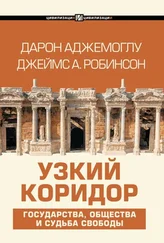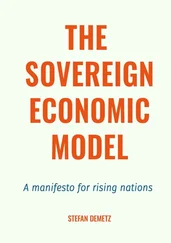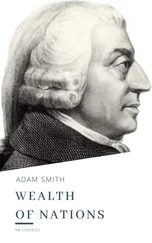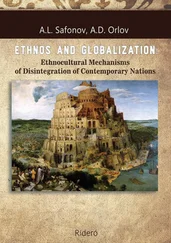In Spain these processes that led to economic progress and institutional change did not take place. After the Americas had been discovered, Isabella and Ferdinand organized trade between their new colonies and Spain via a guild of merchants in Seville. These merchants controlled all trade and made sure that the monarchy got its share of the wealth of the Americas. There was no free trade with any of the colonies, and each year a large flotilla of ships would return from the Americas bringing precious metals and valuable goods to Seville. The narrow, monopolized base of this trade meant that no broad class of merchants could emerge via trading opportunities with the colonies. Even trade within the Americas was heavily regulated. For example, a merchant in a colony such as New Spain, roughly modern Mexico, could not trade directly with anyone in New Granada, modern Colombia. These restrictions on trade within the Spanish Empire reduced its economic prosperity and also, indirectly, the potential benefits that Spain could have gained by trading with another, more prosperous empire. Nevertheless, they were attractive because they guaranteed that the silver and gold would keep flowing to Spain.
The extractive economic institutions of Spain were a direct result of the construction of absolutism and the different path, compared with England, taken by political institutions. Both the Kingdom of Castile and the Kingdom of Aragon had their Cortes, a parliament representing the different groups, or “estates,” of the kingdom. As with the English Parliament, the Castilian Cortes needed to be summoned to assent to new taxes. Nevertheless, the Cortes in Castile and Aragon primarily represented the major cities, rather than both the urban and rural areas, as the English Parliament did. By the fifteenth century, it represented only eighteen cities, each of whom sent two deputies. In consequence, the Cortes did not represent as broad a set of groups as the English Parliament did, and it never developed as a nexus of diverse interests vying to place constraints on absolutism. It could not legislate, and even the scope of its powers with respect to taxation was limited. This all made it easier for the Spanish monarchy to sideline the Cortes in the process of consolidating its own absolutism. Even with silver coming from the Americas, Charles V and Philip II required ever-increasing tax revenues to finance a series of expensive wars. In 1520 Charles V decided to present the Cortes with demands for increased taxation. Urban elites used the moment to call for much wider change in the Cortes and its powers. This opposition turned violent and quickly became known as the Comunero Rebellion. Charles was able to crush the rebellion with loyal troops. Throughout the rest of the sixteenth century, though, there was a continuous battle as the Crown tried to wrest away from the Cortes what rights to levy new taxes and increase old ones that it had. Though this battle ebbed and flowed, it was ultimately won by the monarchy. After 1664 the Cortes did not meet again until it would be reconstructed during the Napoleonic invasions almost 150 years later.
In England the defeat of absolutism in 1688 led not only to pluralistic political institutions but also to the further development of a much more effective centralized state. In Spain the opposite happened as absolutism triumphed. Though the monarchy emasculated the Cortes and removed any potential constraints on its behavior, it became increasingly difficult to raise taxes, even when attempted by direct negotiations with individual cities. While the English state was creating a modern, efficient tax bureaucracy, the Spanish state was again moving in the opposite direction. The monarchy was not only failing to create secure property rights for entrepreneurs and monopolizing trade, but it was also selling offices, often making them hereditary, indulging in tax farming, and even selling immunity from justice.
The consequences of these extractive political and economic institutions in Spain were predictable. During the seventeenth century, while England was moving toward commercial growth and then rapid industrialization, Spain was tailspinning toward widespread economic decline. At the start of the century, one in five people in Spain was living in urban areas. By the end, this figure had halved to one in ten, in a process that corresponded to increasing impoverishment of the Spanish population. Spanish incomes fell, while England grew rich.
The persistence and the strengthening of absolutism in Spain, while it was being uprooted in England, is another example of small differences mattering during critical junctures. The small differences were in the strengths and nature of representative institutions; the critical juncture was the discovery of the Americas. The interaction of these sent Spain off on a very different institutional path from England. The relatively inclusive economic institutions that resulted in England created unprecedented economic dynamism, culminating in the Industrial Revolution, while industrialization did not stand a chance in Spain. By the time industrial technology was spreading in many parts of the world, the Spanish economy had declined so much that there was not even a need for the Crown or the land-owning elites in Spain to block industrialization.
FEAR OF INDUSTRY
Without the changes in political institutions and political power similar to those that emerged in England after 1688, there was little chance for absolutist countries to benefit from the innovations and new technologies of the Industrial Revolution. In Spain, for example, the lack of secure property rights and the widespread economic decline meant that people simply did not have the incentive to make the necessary investments and sacrifices. In Russia and Austria-Hungary, it wasn’t simply the neglect and mismanagement of the elites and the insidious economic slide under extractive institutions that prevented industrialization; instead, the rulers actively blocked any attempt to introduce these technologies and basic investments in infrastructure such as railroads that could have acted as their conduits.
At the time of the Industrial Revolution, in the eighteenth and early nineteenth centuries, the political map of Europe was quite different from how it is today. The Holy Roman Empire, a patchwork quilt of more than four hundred polities, most of which would eventually coalesce into Germany, occupied most of Central Europe. The House of Habsburg was still a major political force, and its empire, known as the Habsburg or Austro-Hungarian Empire, spread over a vast area of around 250,000 square miles, even if it no longer included Spain, after the Bourbons had taken over the Spanish throne in 1700. In terms of population, it was the third-largest state in Europe and comprised one-seventh of the population of Europe. In the late eighteenth century the Habsburg lands included, in the west, what is today Belgium, then known as the Austrian Netherlands. The largest part, however, was the contiguous block of lands based around Austria and Hungary, including the Czech Republic and Slovakia to the north, and Slovenia, Croatia, and large parts of Italy and Serbia to the south. To the east it also incorporated much of what is today Romania and Poland.
Merchants in the Habsburg domains were much less important than in England, and serfdom prevailed in the lands in Eastern Europe. As we saw in chapter 4, Hungary and Poland were at the heart of the Second Serfdom of Eastern Europe. The Habsburgs, unlike the Stuarts, were successful in sustaining strongly absolutist rule. Francis I, who ruled as the last emperor of the Holy Roman Empire, between 1792 and 1806, and then emperor of Austria-Hungary until his death in 1835, was a consummate absolutist. He did not recognize any limitations on his power and, above all, he wished to preserve the political status quo. His basic strategy was opposing change, any sort of change. In 1821 he made this clear in a speech, characteristic of Habsburg rulers, he gave to the teachers at a school in Laibach, asserting, “I do not need savants, but good, honest citizens. Your task is to bring young men up to be this. He who serves me must teach what I order him. If anyone can’t do this, or comes with new ideas, he can go, or I will remove him.”
Читать дальше












